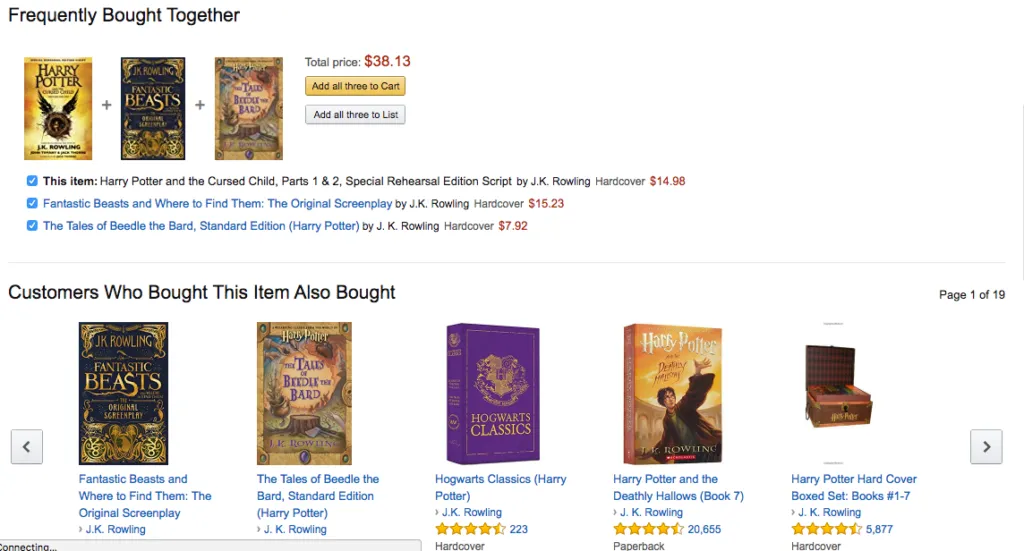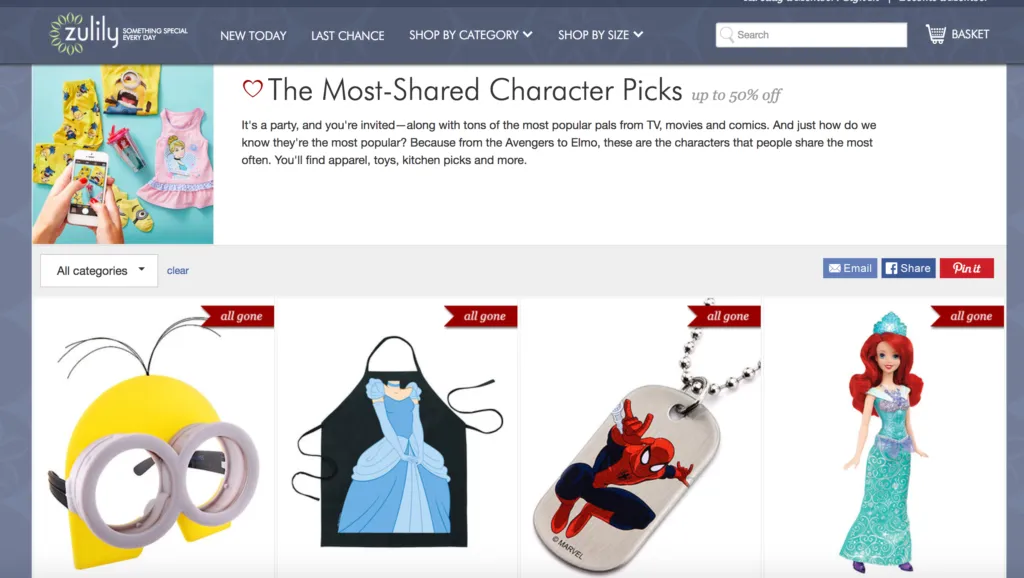What is Social Commerce – Our Collection of Trends, Statistics, and Examples
The rise of online shopping and social media has to lead to the birth of a new type of purchasing behavior that offers consumers a better digital shopping experience.
Social commerce is about building a relationship with customers and not about pushing a product or service like traditional commercial tactics.
This article is designed to show you the terms, trends, and in-action examples of social commerce.
What is Social Commerce?
Social Commerce (sCommerce): A digital initiative that uses social media to assist in the buying and selling of products and services.
- According to Gartner, 74% of consumers turn to social networks to guide their purchases.
The goal of sCommerce is to increase:
- Traffic
- Customer engagement
- Brand equity
- Authority
- Social Proof
In the hopes of building stronger customer relationships, community, and trust.
Once this relationship is built, retailers can focus on converting the customer.
Social Commerce Statistics
According to Shopify:
- Facebook is the dominant source of social traffic
- Shopify example: ⅔ of Shopify sales and 85% of all eCommerce orders from social media come from Facebook
- Polyvore generates the most order value
- Facebook’s conversion rate is 1.85% making it the highest

According to Statista:
- Worldwide social commerce revenue is $20 billion
According to Business Insider:
- Social commerce is driving huge increases in retail traffic
- Retailers should focus on mobile social commerce, while social engagement with retail content is the least shared. “Social media users are 35% less likely to share a brand’s or retailer’s social post on mobile than they are on desktop computers”
- Pinterest has a small user base but is still a major play in the social commerce realm
- Pinterests drives 16% of social revenue and this number should increase with Pinterest’s new “Buy Now” buttons
- Twitter’s role in social commerce is expected to help sporting and event marketers
8 Social Commerce Terms
Social Commerce can be broken down into 8 types of buying and selling behaviors:
1.Peer-to-Peer Sales Platforms: Community-based sales platforms where individuals communicate, shop, buy and sell directly to one another.
Example: Craigslist, EBay, and even Facebook groups
A survey found that consumer reviews are 157% more effective than traditional advertisements.
2.Social Network-Driven Sales: When social networks drive the buying or selling of a product from the physical or online retail store or from the platform itself.
Examples: Instagram, Pinterest, Facebook
3.Coupon Platforms: When multiple people buy a product in bulk purchase for a discounted price.
Example: Livingsocial, Groupon
4.Peer Recommendations: Websites that reward customers for recommending products and services to their peers. These kinds of websites also recommend other products based on past purchase history.
Example: Amazon
Amazon recommends relevant books based on the purchase and also books that were frequently bought together.

5.Participatory Commerce: Where consumers are directly involved in the financing of a product or service
Example: Kickstarter, RocketHub
6.User-Curated Shopping: Where users create lists of recommended products and services for others to shop from.
Example: Lyst, Svpply
7.Social Shopping: Where consumers can shop online with their friends.
Example: Rent the Runway
Rent the Runway lets customers post pictures of the dresses they rent with reviews on the piece they rented.

8. On site is when a website encourages customers to share their purchases immediately after the transaction.
Zulily has a section of their website where they feature the most-shared picks that feature a discount
(Source)
5 Trends in Social Commerce
1.Peer Recommendations
Social commerce thrives on community. Customers give reviews and ratings to help out their other community members or fellow shoppers.
Etsy and Amazon encourage peer-to-peer reviews by:
- Providing their users’ space for writing product/service reviews
- Delivering automated messages asking customers to review their purchased product/service
Amazon even had to change their review acceptance policy because brands were giving away free products in exchange for positive reviews
2.Influencer Marketing
Influencer marketing is the new way for brands to reach their customer through a trusted source.
According to an Ogilvy Cannes Study, “74% of people turn to social networks for guidance on purchase decisions.”
TD Ameritrade started the “Human Finance Project” where they used real people who used TD to finance their projects.
The goal of the project was to make consumers feel connected and trustworthy towards the brand by listening to the stories of financial advisors.

3.Messaging Apps
Messaging services that were once considered just for connecting with friends are evolving into a place to connect with brands, browse products and services, and see content.
According to Business Insider, the number of collective users on top 4 messaging apps is larger than the number of collective users on the top 4 social media apps.
Messaging apps like LINE and WeChat started the trend by finding innovative ways to keep their users engaged.
Example: Users of LINE can view the latest news, discounts, and promotions from their favorite brands and artists directly on the app.

E-Commerce and digital retailers are hopping on the trend of monetizing messaging apps.
For example, users can book themselves an Uber via Whatsapp, LINE, or SMS.
Instagram is a Thriving Social Commerce Platform
Instagram is evolving into a social commerce platform where businesses thrive
According to Brand Watch, “Engagement with brands on Instagram is 10 times higher than Facebook, 54 times higher than Pinterest, and 84 times higher than Twitter.”
And it’s no wonder… Instagram has a lot to offer businesses.
Instagram has 4 CTA buttons:
- Sign Up
- Shop Now
- Install Now
- Learn More
According to Hootsuite, “75% of Instagram users take action, such as visiting a website, after looking at an Instagram advertising post.”
Instagram is trying to make video advertisements better for businesses by expanding their duration from 30 seconds to 60 seconds.
Instagram stories has made it so businesses can give viewers a “behind the scenes” into what their brand is really like.
Influencer marketing on Instagram is rapidly growing in popularity.
Instagram influencers can use their story to link or tag brands that they’ve recommended to their followers.
Instagram allows brands to buy sponsored posts that are shown to users based on the accounts they follow and the pictures they like and comment on.

4.Blog
Blogs are used by companies to build authority and reputation among consumers.
If a blog offers consumers expert advice that is truly helpful, then consumers will trust and reference that particular brand when they are making a purchase or a recommendation.
HubSpot Blog is known for offering expert advice to their customers that are proven to get results.

(Source)
5.Video Content
Brands are expected to be using video as their preferred form of content.
Google, for example, introduced “True View” where YouTube viewers can buy products and services from the advertisements they see before watching a video.
Google has also made it so that brands can include product information and clickable CTA’s that direct viewers to their website.

The Future of Social Commerce
Social commerce helps brands expand their relationships with their customers so that they can maintain trust, familiarity, and positive relationships.
Brand loyalty is increased through:
- Online communities by creating a space where it is easy for users to post
- Welcoming to customers with quality support
- Creating a relevant and tailored shopping experience
